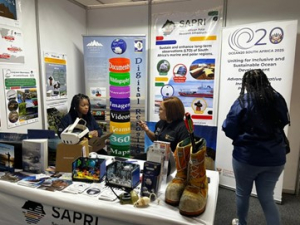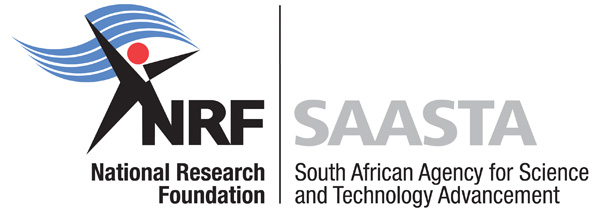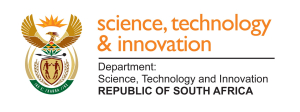NSW 2025: More Than A Launch, A Reason To Be There
By Lindie Muller; SAASTA: 8 August 2025

South African Polar Research Infrastructure (SAPRI): Antarctica to ocean data — the SAPRI and Antarctic Legacy SA booth brings marine and polar research to life through interactive tools and stories.
A SAASTA team member reflects on why being present at science engagement events matters — not just for the public, but for staff too.
It’s easy to think of National Science Week as something we implement — something we plan, coordinate, and manage from a distance. But sometimes, the most powerful thing we can do is simply show up.
At this year’s national launch, held at Tshwane University of Technology, I was not there to lead or log data — I attended as a participant. I stood among the crowd, and for the first time, I saw it not as a planner but as part of the pulse.
And it changed something in me.
I arrived just as the momentum was beginning to build. The exhibition tents were already starting to stir — exhibitors moved between their displays, checking last details and exchanging quiet words. Then the doors opened: the science came alive. People began to stream in, mostly learners, eyes wide, voices rising, curiosity radiating.
I wandered to the STEAM Festival booth just as it started: presenters stood up, commanding the space with rhythm and flair, turning science into music, movement, and identity. “I identify as a cell…” — five words that landed with precision. Not only because they made life sciences relatable, but because they echoed the way young people claim space today — through identity, rhythm, and voice. In that moment, life science wasn’t abstract. It was lived. It had a beat. It belonged to them. You could see it in their faces — the recognition, the spark, and then the shift. Heads nodded. Hands lifted mid-air to catch the rhythm. Some leaned in closer, pulled in by the energy. They weren’t just watching science happen. They stepped into it — fully, joyfully, without hesitation.
That was a moment that pulsed outward; a public display of science engagement that reached learners where they were, reshaping how they see science and how it sees them. But just as powerful was the quiet current flowing inward, the subtle shifts within the system itself. Behind the booths, between the handshakes and shared coffee, the machinery of science engagement evolved.
I overheard a staff member describe how a mobile, mostly paper-based, low-cost microscope, also known as a fold-a-scope, could be adapted to support astrophotography by modifying its fitting for use on a telescope. He wasn’t stationed at a booth; he moved between exhibitions, engaging with exhibitors, connecting ideas, and sparking possibilities. At one point, I also overheard a conversation about how two displays might align — how their work could build on each other. A small spark of innovation, drifting lightly through the space. Ideas flowed. Conversations opened. Details exchanged hands. It was symbiotic. Organic. Beautiful.
This is what we mean when we talk about ecosystems in science engagement — not just in the natural sense, but also in the institutional, human, and imaginative sense. We work toward polished exhibitions and vibrant public engagement, yes — but also toward the invisible threads of collaboration, alignment, and shared purpose that hold it all together.
The energy was unmistakable — upbeat, alive, full of movement. Everywhere I turned, there were smiles. Conversations. Questions. A shared sense of building something larger than ourselves. And it reminded me of something I had almost forgotten: National Science Week is not just about science on display; it’s about the systems and people who make science matter. It echoes the NRF’s vision of an empowered society through science, lives out the Department of Science, Technology and Innovation’s science engagement strategy, and gives form to our national commitment to expanding access to STEM, especially for young South Africans who might not yet know they belong here.
I didn’t help organise this launch. I didn’t carry boxes or manage logistics. But I was present — and that, too, matters. Sometimes, the best way to understand what we’re building is to stand inside it. To feel it. To see how learners light up, how new ideas take root, how scattered pieces begin to align. For me personally, being there didn’t just make me proud — it reminded me why I chose to be part of the system in the first place. And I left thinking: if one morning can do that, imagine what might happen if more of us showed up

 The South Africa Agency for Science and Technology Advancement (SAASTA) is a business unit of the
The South Africa Agency for Science and Technology Advancement (SAASTA) is a business unit of the 